
[p. 232]
XII. MEN AND WOMEN, OR POLYGAMY, IN UTAH.
Brigham Young, Heber C. Kimball, and other Leading Apostles— Long Interviews and Talks with Them—Discussion about Polygamy —Suggestion of a New Revelation against it—Later Extension of Polygamy—The Sabbath Services of the Mormons—Preaching by Brigham Young—Extracts from Mormon Sermons—Mr. Colfax in the Mormon Pulpit—How does Polygamy Work?—The Children —The Husbands and the Wives—What the Latter Say and How they Bear it—Illustrations of Polygamous Life and Habits—Brig– ham Young’s Children and Wives—Beauty and the Beast—List of Young’s Harem.
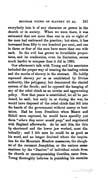
[p. 241]
Our afternoon’s talk with Young and his associates included the proper way of treating the leading rebels
and the merits of slavery in the abstract. He boldly
espoused slavery per se as established by Divine
authority, like polygamy, but denounced the chattel
system of the South; and he opposed the hanging of
any of the rebel chiefs as an unwise and aggravating
policy. Now that peace is established, let all be pardoned,
he said; but early in or during the war, he
would have disposed of the rebel chiefs that fell into
the hands of the government without mercy or hesitation.
Had he been President when Mason and Slidell were captured,
he would have speedily put them "where
they never would peep," and negotiated with England
afterwards. As he said this, the thin lip shortened and the
lower jaw worked, most diabolically; and I felt sure he could
be as good as his word, and no longer doubted where the inspiration
for the Mountain Meadow massacres, the slaughter of the recusant
Josephites, or the various assassinations by the "Danites"
of individual rebels from the church or uncompromising Gentiles, came from.
Young thoroughly believes in punishing his enemies
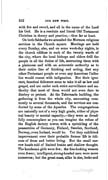
[p. 242]
with fire and sword, and all in the name of the Lord
his God. He is a resolute and literal Old Testament
Christian in theory and practice,—thus far at least.
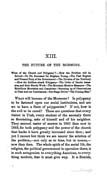
[p. 259]
XIII. THE FUTURE OF THE MORMONS.
What of the Church and Polygamy?—How the Problem will be Solved—No Fit Successor for Brigham Young—The Past Neglect and Present Duty of the Government—The Division of the Territory —How the Soldiers attack Polygamy—The Order of Danite Assassins, and their Bloody Work—The Mountain Meadow Massacre—The Rebellious Morrisites and Josephites—Summing up of Observations in Utah and our Conclusions—0ur Stage Driver "The Coming Man."
We hear less of late than in past years of the order
of the "Danites," a band of secret Mormon assassins,
who, under the direction of Brigham Young, put out
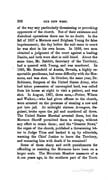
[p. 266]
of the way any particularly threatening or provoking
opponents of the church. But of their existence and
diabolical operations there can be no doubt. In the
fall of 1857 a Mormon sued Brigham Young for false
imprisonment; the day before the suit came to court
he was shot in his own house. In 1858, two men
obtained a judgment of the court against a leading
Danite, and both were shot in cold blood. About the
same time, Mr. Babbitt, Secretary of the Territory,
had a quarrel with Young, and was murdered. In
1866, Mr. Beanfield of Austin, Nevada, a highly
respectable gentleman, had some difficulty with the
Mormons, and was shot. In October, the same year, Dr.
Robinson, Surgeon of the United States Army, who
had taken possession of unoccupied land, was called
from his house at night to visit a patient, and was
shot. In August, 1867, three men,—Potter, Wilson
and Walker,—who had given offense to the church,
were arrested on the pretense of stealing a cow and
put into jail. At midnight sixteen Avengers, disguised,
broke open the jail and murdered all three.
The United States Marshal arrested them, but the
Mormon Sherif permitted them to escape, without
any effort to retain them; and the "Deseret News,"
the organ of the church, published a threatening letter
to Judge Titus and backed it up by editorials,
warning the Chief Justice to leave the Territory,
and menacing him with death if he remained!
Some of these sharp and swift punishments for
offending or resisting the Mormons have been on a
larger scale. The Mountain Meadow massacre of a
dozen years ago, in the southern part of the
Terri-
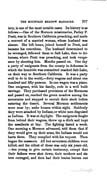
[p. 267]
tory, is one of the most notable cases. Its history is as follows:—One of the Mormon missionaries, Parley P.
Pratt, was in Southern California preaching, and made
a convert of a married woman, whose husband was
absent. She left home, joined herself to Pratt, and
became his concubine. The husband determined to
be revenged, followed them to Salt Lake, then to
Arkansas, where Pratt was preaching, and took vengeance
by shooting him. Months passed on. One day
a party of emigrants from the county in Arkansas in
which the homicide was committed reached Salt Lake,
on their way to Southern California. It was a party
well to do in the world,—forty wagons and about one
hundred and fifty persons. In one wagon was a piano. One emigrant, with his family, rode in a well built
carriage. They purchased provisions of the Mormons and passed on, reached the green meadow among the mountains and stopped to recruit their stock before entering the desert. Several Mormon settlements
were near by; some houses within sight. Suddenly they were attacked by Indians, or white men disguised as Indians. It was at daylight. The emigrants fought from behind their wagons, threw up a ditch and kept the assailants at bay. The fighting lasted a week.
One morning a Mormon advanced, told them that if they would give up their arms, the Indians would not
harm them. They complied with his request. Then
began the massacre. All but seventeen children were
killed, and the oldest of these was only six years old,
—too young to give certain testimony, except that
their fathers were shot down, their mothers and sisters
outraged, and then had their brains beaten out
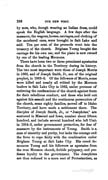
[p. 268]
by men, who, though wearing an Indian dress, could
speak the English language. A few days after the
massacre, the wagons, horses, carriages, and clothing of
the murdered ones, were brought to Salt Lake and
sold. Ten per cent. of the proceeds went into the
treasury of the church. Brigham Young bought the carriage for his own use, and the piano is now owned
by one of the leading Mormons.